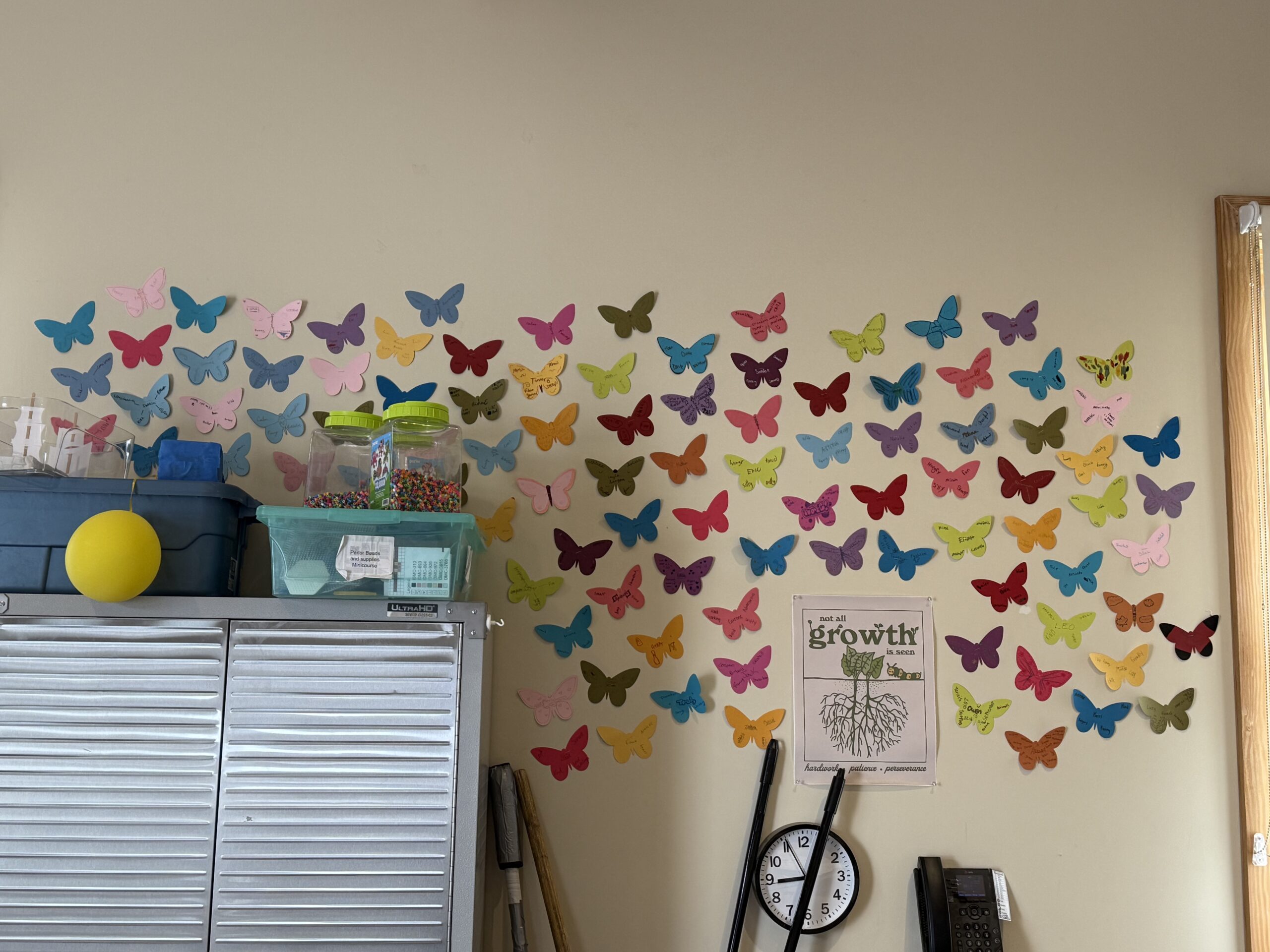“There is nothing in a caterpillar that tells you it’s going to be a butterfly.” — Buckminster Fuller
A Montessori middle school teacher asked her students to write some of their strengths on paper butterflies. Then she hung a poster amid the butterflies with the words “Not all growth is seen,” above a caterpillar, leaves, and deep roots drawn above the words “hard work,” “patience,” and “perseverance.”
This simple wall art brought to mind and caused me to question the Buckminster Fuller quote, “There is nothing in a caterpillar that tells you it’s going to be a butterfly.” These students — very much in the metamorphosis stage of adolescence, which Maria Montessori describes as the “social newborn” phase — seem to already know their butterfly beauty and wings ready to fly. Words like “artistic,” “kind,” “funny,” “sporty,” “cheerful,” “silly,” “fun” (and, yes, “hungry” like caterpillars) graced the wings of the paper butterflies.
Maybe when we hear about adolescents suffering from higher rates of anxiety and depression than ever before, it’s in large part because adults have failed to understand the beauty and importance of this phase of development, not because the tweens and teens don’t know their own magnificence. Especially for butterflies, it’s hard to fly weighted down by the unrealistic expectations of a school system not designed for their fundamental needs and the resulting misunderstandings of the adults in their lives.
